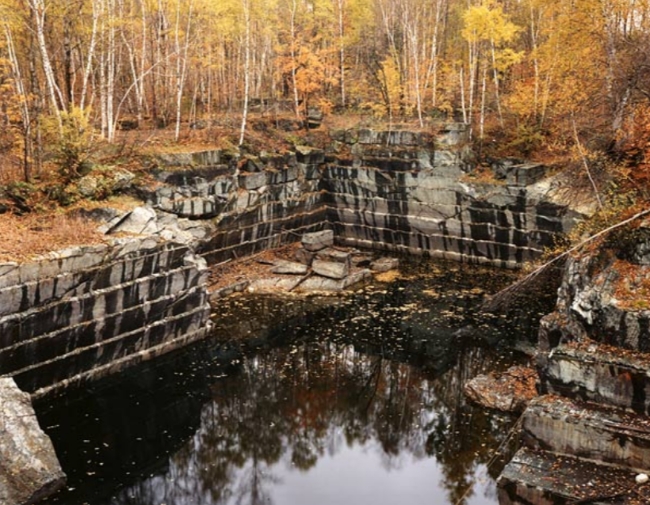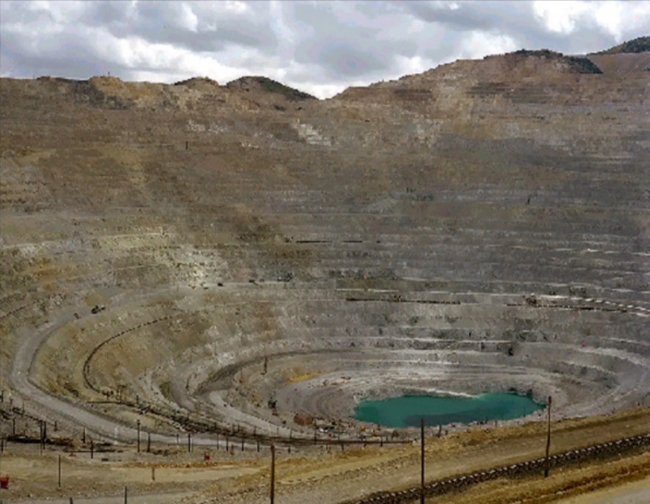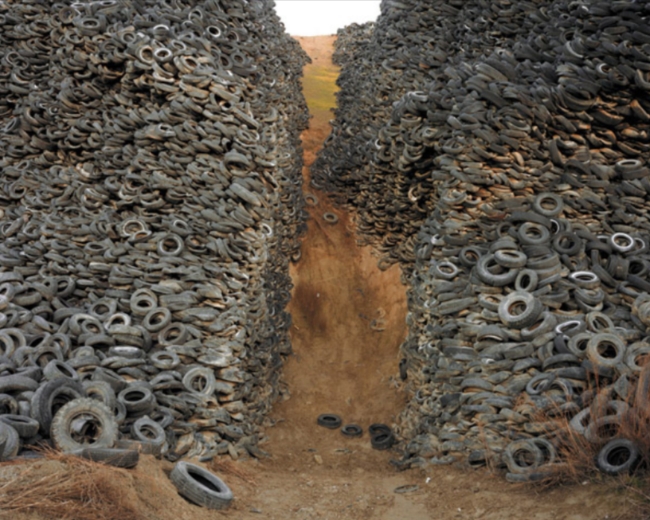Edward Burtynsky has been called the Ansel Adams of the ruined landscape. He creates large, stunningly beautiful images of nature, but not the organic nature celebrated by Adams. Burtynsky describes the essential theme of his photography as “nature transformed through industry.”
Burtynsky was born in 1955 in Ontario, Canada. He’s the son of a Ukrainian immigrant, an auto worker who died young from cancer (possibly a result of exposure to PCBs). He became interested in photography at an early age. His father bought some darkroom equipment and a camera from a widow whose husband had been an amateur photographer, gave his son two rolls of Tri-X, and told him if he wanted if he wanted to practice photographer he’d have to find some way to pay for it. Burtynsky did just that. Although even as a youngster his interest was in landscape photography, he began photographing events and shooting portraits at the local Ukrainian community center, selling photos for fifty cents each.

Burtynsky eventually earned degrees in photography and graphic arts from Ryerson University and Niagara College. To support himself while getting his education he worked a variety of labor-based jobs, mostly factory and mining work. The mines apparently reshaped his notion of landscape photography.
I started shooting mines, never thinking of them as a subject. It was kind of a curiosity. I was looking at landscape, and trying to compose with a large frame camera with tightly compressed information. I wasn’t doing landscapes, but I was using landscapes to find a form that I like to work with. I kept trying to hone done to how a painter would look at the blank canvas and say, how do I fill in via my piece of 4×5 film.
Using medium and large format cameras, he began photographing the detritus of industrial civilization. Abandoned quarries, strip mines, chemical waste, salvage yards, waste disposal facilities, scrap metal and tire yards. He photographed scars left on the landscape by modern consumer-based capitalist culture. Nature transformed through industry.

Yet Burtynsky’s work doesn’t act as a ‘message’ about the horrific things humankind has done–and continues to do–to the environment. There is nothing overtly political about his photographs. His work is not didactic; any education that takes place as a result of his work takes place at the viewer’s end. In fact, Burtynsky has been criticized by some environmental activists. Why? Because his work is too beautiful. Because he merely observes; he doesn’t condemn.
The viewer experiences a variety of contradictory emotions–admiration, distress, pleasure, sorrow, delight, anger, amazement, shame. Burtynsky has openly acknowledged this incongruity. In his artistic statement he says,
“Our dependence on nature to provide the materials for our consumption and our concern for the health of our planet sets us into an uneasy contradiction.”

Humans are a meddling species; we have always imposed ourselves on the landscape. Thousands of years ago we began to cultivate and domesticate grains, encouraging the plants we wanted to grow and discouraging the ones we didn’t; today we cut down thousands of acres of old growth hardwood trees and replace them with soybeans. Thousands of years ago we removed gravel from creek beds; today we remove gravel through open pit mining. There is a logical, if horrific, progression in the way humans have transformed nature through industry.
